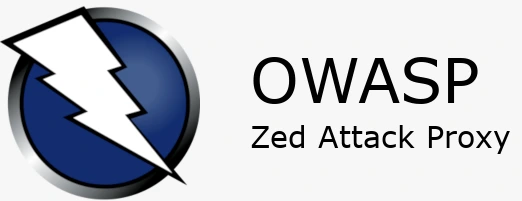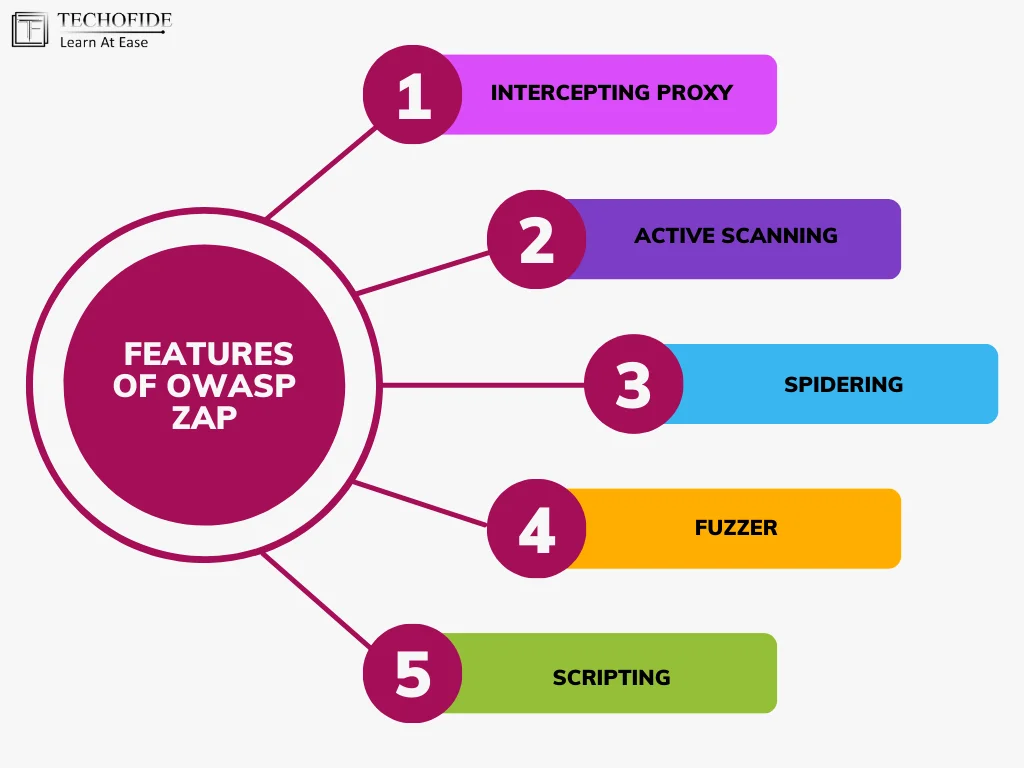Hello cyber learners,
Web application security is critical in today's digital age. Hackers are always looking for vulnerabilities in web applications to exploit, and organizations need to ensure that their web applications are secure to protect their data and reputation. One tool that can help with this is OWASP ZAP (Zed Attack Proxy), a powerful web application security testing tool.
In this blog, we'll provide an overview of OWASP ZAP, its features, and how it can be used for web application security testing.
- What is OWASP ZAP?
- Why is OWASP ZAP Important for Web Security?
- What are the Features of OWASP ZAP?
- How can OWASP ZAP be Used for Web Application Security Testing?
- OWASP ZAP vs BurpSuite
- Conclusion
What is OWASP ZAP?
OWASP ZAP is a free and open-source web application security testing tool that is designed to find vulnerabilities in web applications.

It is maintained by the Open Web Application Security Project (OWASP), a non-profit organization dedicated to improving web application security. ZAP is available for Windows, macOS, and Linux.
Why is OWASP ZAP Important for Web Security?
There are several reasons why OWASP ZAP is an important tool for web security:
- It's free and open source: ZAP is available for free under an open-source license, making it accessible to developers of all skill levels.
- It's easy to use: ZAP has a user-friendly interface that makes it easy to perform security testing, even for those with limited security expertise.
- It's comprehensive: ZAP provides a wide range of security testing capabilities, including vulnerability scanning, active and passive scanning, and fuzz testing.
- It's customizable: ZAP can be extended with custom scripts and plug-ins, allowing developers to tailor it to their specific needs.
- It's supported by a community: ZAP has a large and active community of users and contributors, providing resources and support for developers.
What are the Features of OWASP ZAP?
OWASP ZAP has a range of features that make it a powerful tool for web application security testing. Some of these features include:

- Intercepting proxy: ZAP acts as a proxy between the web browser and the web application, allowing you to intercept and modify requests and responses. This allows you to test the security of the web application by modifying requests to test for vulnerabilities.
- Active scanning: ZAP can perform active scanning of web applications to identify potential vulnerabilities, such as SQL injection, cross-site scripting (XSS), and more. Active scanning can be automated to scan large web applications quickly.
- Spidering: ZAP can crawl a web application to identify all its pages and their parameters. This helps identify potential vulnerabilities that may be missed during manual testing.
- Fuzzer: ZAP can generate various payloads to test web application inputs and detect potential vulnerabilities. This feature helps identify potential input validation issues in web applications.
- Scripting: ZAP has a powerful scripting engine that allows you to automate repetitive tasks and customize their functionality. This makes it easy to integrate ZAP into your security testing workflow and customize it to your specific needs.
How can OWASP ZAP be Used for Web Application Security Testing?
OWASP ZAP can be used by security professionals, developers, and quality assurance testers to identify security vulnerabilities in web applications. Here are some examples of how ZAP can be used:
- Identifying vulnerabilities: ZAP's active scanning and spidering features can be used to identify vulnerabilities in web applications. This includes common vulnerabilities such as SQL injection, cross-site scripting (XSS), and more.
- Validating security controls: ZAP can be used to validate the effectiveness of security controls, such as input validation and access control.
- Automating security testing: ZAP's scripting engine can be used to automate repetitive tasks, making it easy to integrate ZAP into your security testing workflow.
- Integrating with other tools: ZAP can be integrated with other tools such as Burp Suite and Jenkins to provide even more powerful testing capabilities.
- Vulnerability Scanning: ZAP can be used to scan web applications for vulnerabilities such as SQL injection, cross-site scripting (XSS), and command injection. It can also identify common misconfigurations and insecure coding practices.
- Active Scanning: ZAP can perform active scanning by sending requests to web applications and analyzing the responses for potential vulnerabilities. This type of scanning can identify more complex vulnerabilities that may not be detected by passive scanning.
- Fuzz Testing: ZAP can be used for fuzz testing, which involves sending many invalid or unexpected inputs to a web application to see how it responds. This can help identify vulnerabilities related to input validation and handling.
Now that we've covered the basics of OWASP ZAP, let's dive deeper into some of its features and capabilities.
OWASP ZAP vs Burp Suite
In the world of web application security testing, Burp Suite stands out as a formidable competitor to OWASP ZAP - if you're interested in exploring this tool further, be sure to check out our blog on What is Burp Suite | How to use Burp Suite | Burp Suite Tutorial for Beginners
Here are the differences between OWASP ZAP and Burp Suite:

- License: OWASP ZAP is an open-source tool that is free to use, modify, and distribute. On the other hand, Burp Suite is a commercial tool that offers a free version with limited functionality and a paid version with advanced features.
- Target Audience: OWASP ZAP is designed for developers, testers, and security teams who need a simple and easy-to-use tool to perform security testing on web applications. Burp Suite, on the other hand, is designed for security professionals and pen testers who require advanced and customizable tools.
- User Interface: OWASP ZAP has a simple and intuitive user interface that makes it easy for beginners to get started with security testing. Burp Suite, on the other hand, has a comprehensive and advanced user interface that offers a wide range of features and functionalities.
- Automated Scanning: OWASP ZAP has limited automated scanning capabilities and is primarily focused on manual testing. Burp Suite, on the other hand, offers advanced and customizable automated scanning features.
- Extensibility: OWASP ZAP can be extended via scripting using the Zest language. Burp Suite, on the other hand, can be extended using the Burp Extender and Python.
- Reporting: OWASP ZAP offers basic reporting functionality that is suitable for small-scale testing. Burp Suite, on the other hand, offers advanced and customizable reporting capabilities that can generate detailed and professional reports.
- Authentication Testing: OWASP ZAP supports various authentication types, but its authentication testing capabilities are limited. Burp Suite, on the other hand, offers advanced authentication testing capabilities.
- Collaborative Testing: OWASP ZAP offers collaborative testing capabilities via add-ons. Burp Suite, on the other hand, has built-in functionality for collaborative testing.
- Target Scope Management: OWASP ZAP has limited capabilities for managing target scope. Burp Suite, on the other hand, offers advanced and customizable target scope management features.
Conclusion
In conclusion, in this blog, we covered the basics of OWASP ZAP and how it is useful in web application security. In the next part of this blog series, we will explore how to install it on both Windows and Linux, how to configure it as a proxy, use FoxyProxy, and perform an automated active scan on a target. We will also discuss how to install a certificate in your browser to intercept traffic. Stay tuned for more!
Commonly Asked Questions
Q1. Can OWASP ZAP be used for testing mobile applications?
Ans. Yes, OWASP ZAP can be used for testing mobile applications that communicate with web services. However, it's important to note that OWASP ZAP is primarily designed for testing web applications, and there are other specialized tools available for testing mobile applications.
Q2. Is OWASP ZAP suitable for beginners?
Ans. Yes, OWASP ZAP has a simple and easy-to-use user interface that makes it suitable for beginners. It also offers a wide range of tutorials and documentation to help users get started with security testing.
Q3. What programming languages are supported by OWASP ZAP?
Ans. OWASP ZAP is written in Java and supports scripting with the Zest language. However, it can also be extended with other programming languages using its API.
Q4. Can OWASP ZAP be integrated with other tools?
Ans. Yes, OWASP ZAP can be integrated with other tools through its API. It also has built-in support for integration with various development and testing tools.
Related Blogs
- What is Wireshark | How to Use Wireshark [Practical Demo]
- How to Install Kali Linux Step By Step Guide
- What is Computer Network | Basics of Networking [With Practical Examples]
- Types of Network Topology with Network Topology Diagram | Techofide
- What is DoS Attack | How to do Denial of Service Attack [Practical Demo]
- Nmap Commands | How to Use Nmap Tool
- Linux Commands | Linux Commands Cheat Sheet
- What is OSINT? | OSINT Framework | Tools for OSINT | Best OSINT Techniques
- What is Smurf Attack? | What is the Denial of Service Attack? | Practical DDoS Attack Step-By-Step Guide